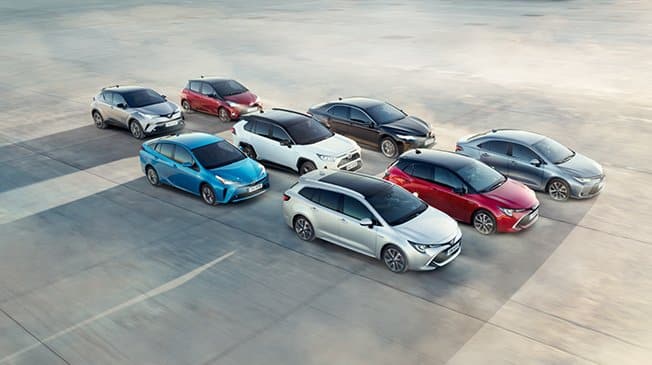Toyota passes 15m hybrid electric vehicle global sales
Toyota has sold more than 15 million hybrid electric vehicles worldwide since the Prius was first launched in 1997.
Today in Europe, sales of HEVs (hybrid electric vehicles) have passed the 2.8M mark with a range of 19 different HEV models on offer across the Toyota and Lexus brands, which in 2019 accounted for 52% of total volume, and 63% in West Europe.
There are now 44 hybrid electric vehicles in the Toyota and Lexus range, far eclipsing the original flag-bearer that remains the symbol of the company’s early foray into mass electrification.
Toyota’s decision to develop hybrid electric vehicles started over 25 years ago when Takeshi Uchiyamada led a team to develop a car for the 21st century, one which would reduce greenhouse gas emissions and other harmful pollutants.
The first-generation Prius was launched in 1997 around the time of the signing of the Kyoto Protocol, which gave new momentum to the environmental movement.
Today, 15 million hybrid sales later, Toyota says it has made a ‘significant’ contribution to the environment as its hybrid electric technology “has reduced CO2 emissions by more than 120 million tonnes worldwide to date compared to sales of equivalent petrol vehicles”.
The company’s original vision has allowed it to be the leader in meeting increasingly stringent emissions regulations around the world, “It is thanks to our hybrid sales that Toyota is well on its way to meeting the 95g/km target set by the EU for 2020 and 2021 in Europe, where CO2 regulations are the toughest in the world,” says Matt Harrison, Executive Vice President of Toyota Motor Europe (TME).
“In addition, our full hybrids are also incredibly effective at running without emissions for the majority of the time in cities” he added.
Across this period, Toyota has seen demand for its hybrid electric vehicles soar as the company has combined this innovative technology with emotional design enabled by the roll-out of its TNGA global platforms. Beyond the current 4th generation hybrid system, Toyota is continuing to refine its hybrid technology to achieve even lower emissions and ever-better fuel efficiency. “Today, hybrid electric vehicles are affordable, accessible and convenient for customers across a broad spread of European markets”.
While Toyota believes that HEVs are an essential part of the future overall mix of electrified vehicles, two decades of electrification experience also feed into the company’s mutli-powertrain strategy.
The company provides and will continue to provide various types of electrified vehicles “to reduce emissions based on regulations, market infrastructure and ultimately customer demand”. Toyota does not see a ‘winner takes all’ scenario but a future where the different electrified technologies, including HEVs, PHEVs (plug-in hybrid electric vehicles), BEVs (battery-operated electric vehicles) and FCEVs (fuel cell electric vehicles), all play a part.
Shigeki Terashi, Chief Officer of Toyota Motor Corporation says: “Of course, we must work hard on improving battery performance and lowering costs (of BEVs), which we are doing. But we must avoid having no plan until we overcome the hurdles related to both BEVs and FCEVs. In the meantime, we can contribute by continuing our work on HEVs.”
The continuous development of electric motors, batteries and power control units over two decades has taught Toyota how to manage and reuse energy efficiently, providing a range of electrified options through hybrids and plug-ins, fuel cell and battery electric vehicles.
To realise this vision in Europe, Toyota is planning to launch 40 new or updated electrified vehicles by 2025, across all technologies, including at least 10 ZEVs (zero emission vehicles).
Its hybrid electric vehicles will remain a core part of the powertrain mix, “helping to drive down emissions together with other types of electrified vehicles.
That has been the company’s goal ever since it launched the first Prius over 20 years ago, with the ultimate ambition to achieve zero emissions in a widespread and sustainable way”.


